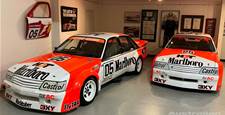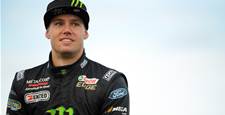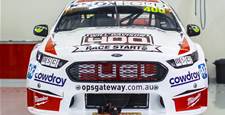If anyone can illustrate the most influential advancements in Australian motorsport across the last few decades, it’s the legendary John Bowe.
During a recent chat with the great Tasmanian for our October 2016 edition, Inside Sport magazine funnelled the discussion towards Bowe’s “Finest Moment” - a self-explanatory and popular section of the magazine where we interview sporting legends like Bowe.
After the My Finest Moment part of the interview, we asked Bowe what he considered were the most dramatic changes motorsport has undergone over the past few decades:
“These days I race in the Touring Car Masters - muscle cars of the 1960s and ‘70s - which I love because it’s all quite unscientific,” the 2008 Masters debutant explained. “I also race periodically in the GT Series, which is very, very hi-tech.
“V8 Supercars is the number-one category in the country and probably always will be. They call it Supercars now, not V8 Supercars, with the possibility of other engines entering the fray, like turbo engines, which hasn’t happened yet, but is likely to happen.”
The 1989 and 1994 Bathurst 1000 champion said personnel and role changes had proven just as dramatic as technological advancements during his time in Supercars and the years since.
“There’s much more science involved in Supercars; that’s the biggest change,” Bowe tells Inside Sport. “Back when it started, in the early 90s through until the late 90s, the teams consisted mostly of mechanics, machinists, fabricators; people with roles like that. Whereas nowadays all the teams have multiple engineers; proper university-trained, very clever ‘boffins’, as I call them. The sport is absolutely full of boffins. Now, that itself is quite fascinating in many ways.

“I mean, I’ve got a bit of a technical brain, and I kind’ve like that aspect of the sport. But, as I’m older, I find I really, really like driving the older cars – you drive them by the seat of your pants, tune the suspension, the engine … it’s all experience stuff.
“I love that side of it. But having said that, you can’t ever go backwards. That’s the greatest change from let’s say the ‘90s to now. You pick any V8 Supercar team and it would have at least six engineers involved in it. It’s a very engineering-led category and sport.
“Nowadays, I can drive the car, YOU can drive the car … Let’s say we’re driving the Ferrari 458 GT3 that Craig Lowndes and I shared at the Bathurst 12-Hour in 2014 … I can see by all the data collection exactly what he’s doing and how he drives and the car and he can see how I drive the car, where I’m losing time or where he’s gaining time or whatever.
“The engineers can see the behaviour of the car very clearly and can tune the set-up of it with much more accuracy. Back in the 90s, the guys who had the better fuel really got the better results, so now it’s not down to that sort of thing anymore.”
Bowe, the 1995 Australian Touring Car champion, rated the driver-engineer relationship these days as arguably the most crucial aspect of a Supercar team.
“Drivers of today rely very heavily on their engineer … and if you happen to have one that’s not that smart, you’re in deep shit.
“The driver and the engineer, those two people are the most important people - and the person who raises the finances to do it … If the driver and the engineer don’t have a very good - or almost telepathic - relationship, you’re not going to get the best out of the team.
“And if the relationship between the driver and the money man is bad, the driver probably hasn’t got the job for very long!”
Related Articles













